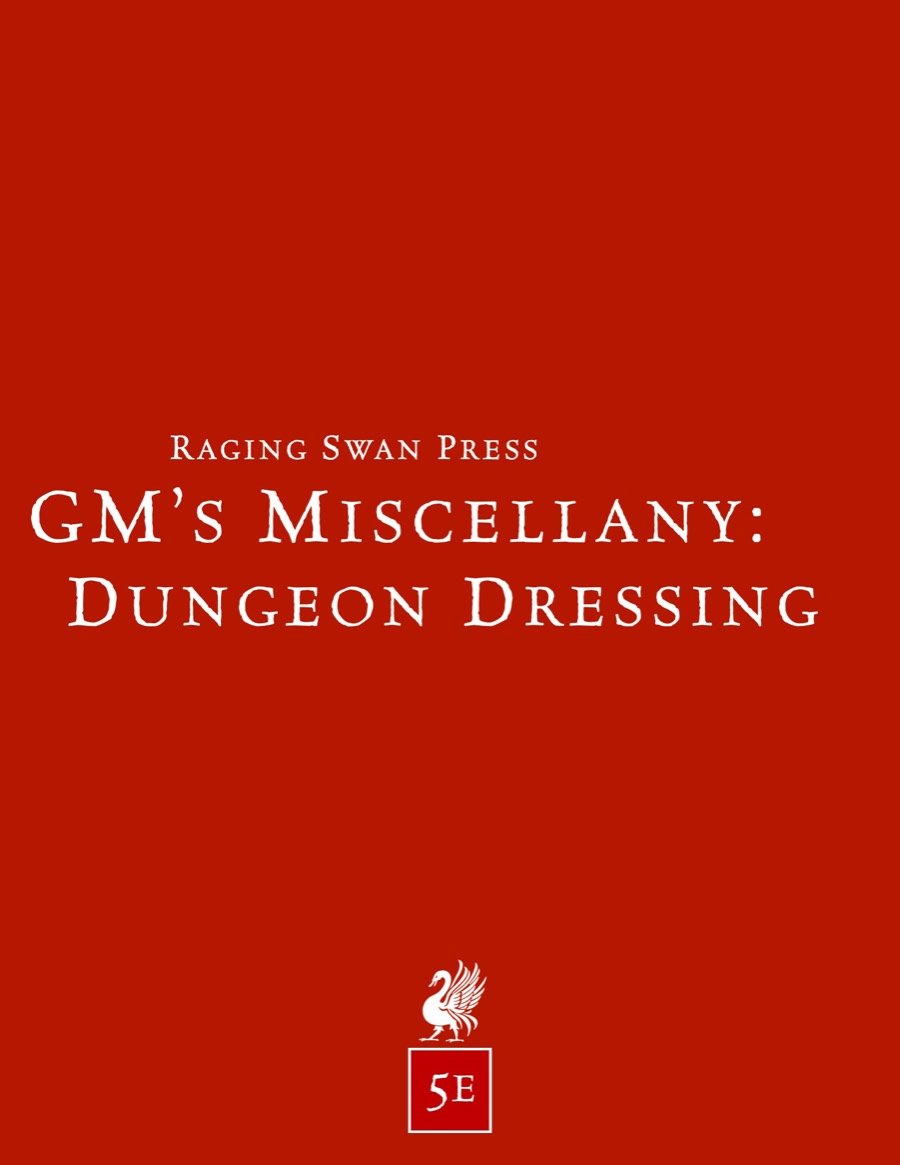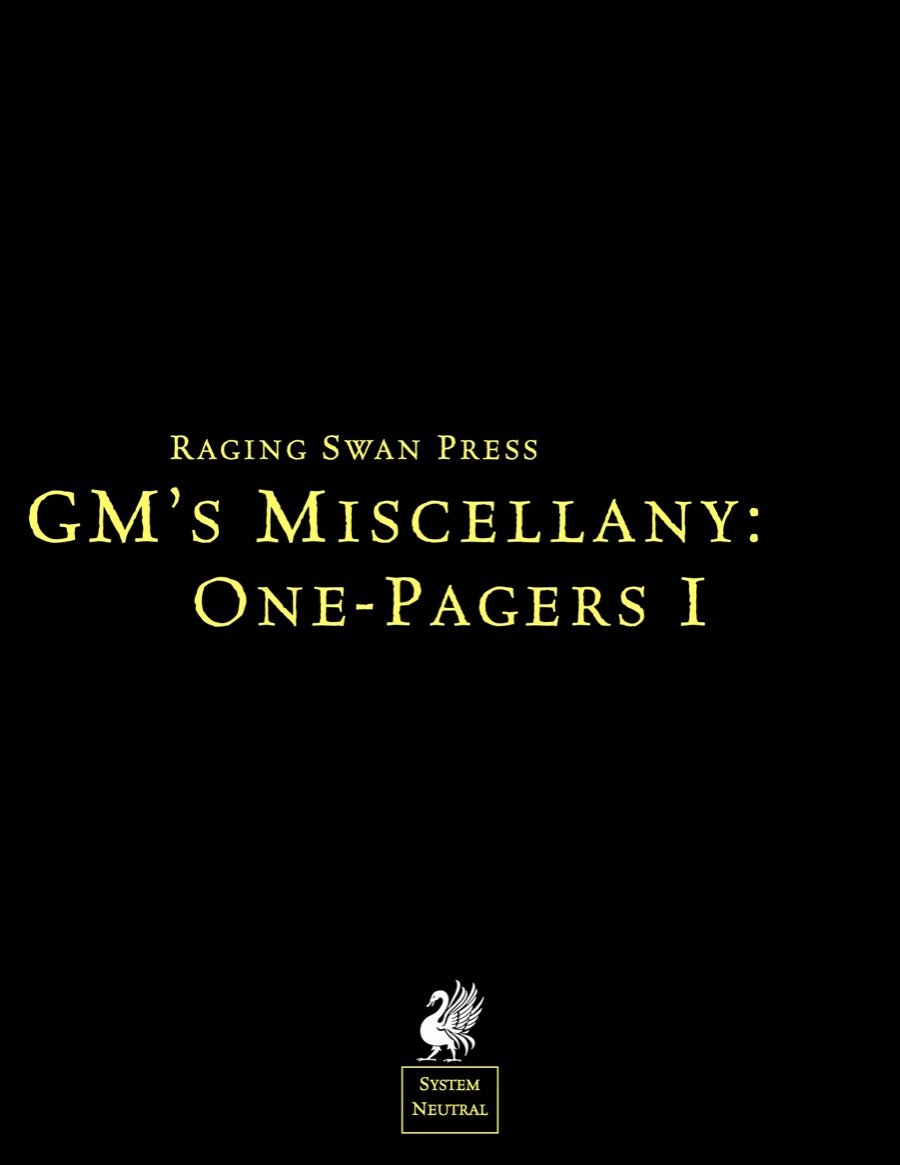Dungeon Dressing: Dungeon Corridors
Many corridors are featureless areas of little or no interest. Other times, a corridor serves as the location of a random encounter or the scene of a trap. Remember to modify the descriptions below to suit the characters’ explorations.
Much of the descriptions below are designed to be read aloud to the players. Information presented inside brackets can be gleaned through investigation.
You can download this material for free as a .pdf and .txt file by hitting the button at the bottom of this post. You do not need to give us your email or set up an account.
If you enjoy this article, sign up to the Sunday Supplement—our weekly newsletter—so you don’t miss any other free GM's Resources!
A noticeable groove in the floor—perhaps worn by the tread of countless feet—runs down the centre of this ten-foot-wide corridor. Without deviation, it leads directly away from the party.
Water oozes down one wall before betraying a slight gradient and flowing away down the corridor. The floor is slick and wet, and tracking through the area is all but impossible. The sheet of water isn’t deep enough to hinder explorers’ progress.
The corridor’s ceiling is arched and about 12 feet high above the centre of the floor. Every 20-foot or so, a three-inch diameter hole pierces alternating walls. (The holes are angled downwards at about 45 degrees, well-constructed and about one-foot deep.)
An archway pierces one wall of this corridor. Runes once adorned the arch, but these have been hacked and smashed and are virtually unreadable. A crudely mortared wall of mismatched stone fills the archway. The work is obviously different to the surrounding style.
A heap of mouldering wood and thick rotting rope partially blocks the corridor. The wood and rope smell of mould and decay. The sodden wood looks so soft almost anyone could crush it in their hand. (The rope—while thick—breaks if used to support any weight greater than 100 lbs. There is 120 ft. of rope, but it weighs three times as much as normal.)
Partway along the corridor, a steep set of steps descends about five feet. Fifteen-foot further on, an identical set returns the corridor to its normal level. Above the sunken section, the ceiling—unworked stone—drops by a similar amount. Thus, explorers cannot see what lies beyond.
A doorway pierces one wall of the corridor. The stone around the doorway is scorched and blackened. Close to the door, some of the stone seems to have melted.
The corridor doubles in width, and the ceiling climbs to 15 feet high. Slender columns, carved to depict questing tentacles emerging from the floor, hold the ceiling aloft and partially obscure explorers’ vision.
A plain five-foot wide shaft pierces the ceiling and floor. A strong breeze blows up the shaft, making the corridor in its immediate vicinity noticeably colder. (Explorers looking up or down the shaft discover it extends as far as their vision. At certain points, it seems to intersect other open spaces.)
A cave-in blocks the corridor. Dust and grit cover the floor. Haphazardly piled stones nearby suggest someone tried to clear the blockage but gave up.
Halfway down the corridor, a small forest of long slender stone spikes has burst from the floor. Half the skeleton of a humanoid lies sprawled nearby. The unfortunate’s legs remain upright, impaled on several spikes.
Six staggered doorways pierce the walls of this corridor. Two have closed stone doors; the other four stand open.
The bas-relief carving of a hideous, man-sized winged and be-tentacled demon leer at explorers from a plinth set in a recessed niche at the end of the corridor. Its three crimson eyes glimmer menacingly.
A stone channel cut into the floor by one wall holds sluggishly flowing water. The discoloured water carries much grit and silt and is unlikely to be drinkable without treatment. Faded chalk writing above the stream comprises one word: “safe”.
This corridor is double the width of the previous area. Bizarrely, the floor is of two heights; one five-foot above the other. A slender, unadorned stone railing separates the two sections. The ceiling is uniformly 20-foot high.
A short flight of cracked, shallow steps drop the corridor’s level by a few feet. A broken crossbow bolt lies discarded on the bottom step.
A narrow opening in one wall leads to a tight spiral staircase. (It turns twice before reaching a stone door that opens to reveal a long gallery. Small, cunningly hidden slits cut into the wall provide a commanding view of the corridor below.)
The corridor opens into a 30-foot long, 20-foot wide space. The corridor continues onwards through an archway in the far wall. An immense iron brazier—easily five-foot wide and ten-foot-tall stands in the centre of the area. The brazier has a small door on one side. Burnt and blackened bones half fill the brazier, and the ceiling above is thickly blackened by soot.
Niches pierce one wall of this corridor. Each holds a three-foot high plinth. Upon each plinth stands the statue of a snarling warrior holding a spear angled out into the corridor. Each statue depicts a short, muscular reptilian humanoid with a lizard-like head. (Explorers can easily walk beneath the spears).
A wide stream channel cuts the corridor in half. A gently arched stone bridge crosses the stream. The bridge has no parapet or handrail but is only 15 feet long.
Get the Free Download
Download this post by hitting the button below—you’ll get a zip file containing a lightweight one-page PDF and a superlight text file for your digital GM’s folder or virtual tabletop (VTT).
If you’ve found this resource useful, please let me know by leaving a comment. And also leave a comment if you have a suggestion to make this kind of post better.


